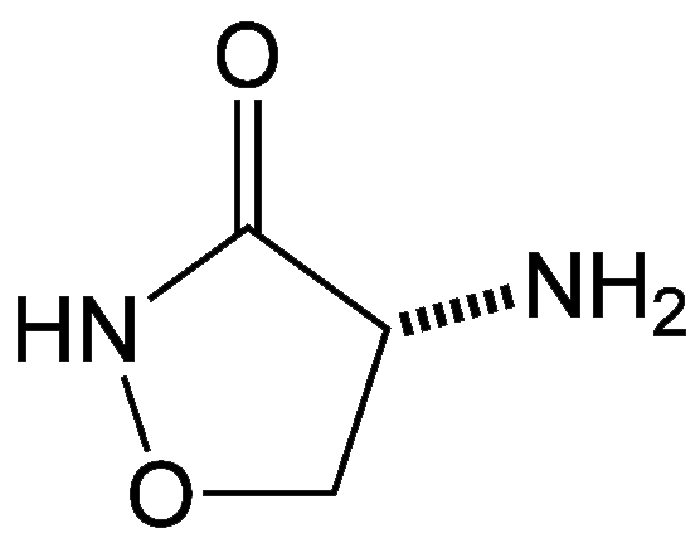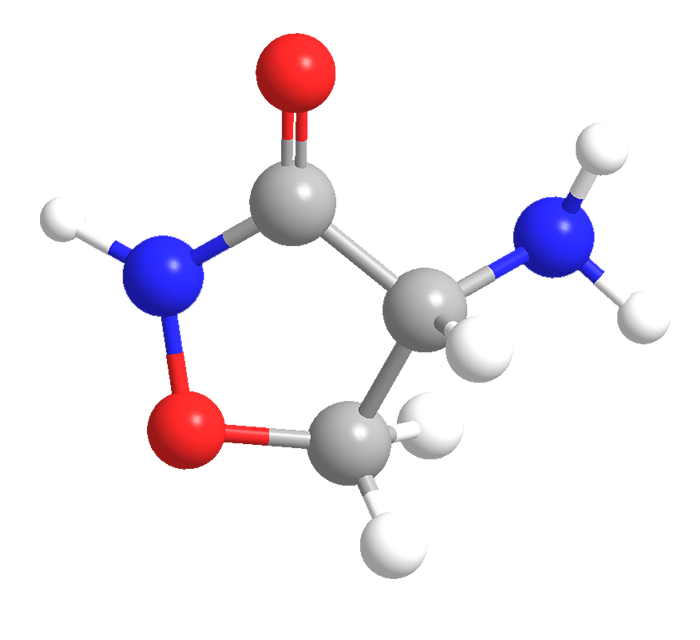What molecule am I?


D-Cycloserine is a naturally occurring cyclic amino acid that can be thought of as an oxidatively cyclized version of its namesake d-serine. It is produced by Streptomyces bacteria and has been used to treat the tuberculosis pathogen, Mycobacterium tuberculosis.
D-Cycloserine, also called oxymycin and D-4-amino-3-isoxazolidone, was the subject of a flurry of articles published in issue 8 of the 1955 volume of JACS. In succession, Merck researchers reported its isolation from Streptomyces garyphalus; scientists at Eli Lilly and Commercial Solvents Corp. reported similar results from Streptomyces ocrhidaceus ; and Merck chemists synthesized racemic cycloserine.
Fast-forward to 2015: Psychologist Robert S. Asarnow and co-workers at UCLA were building on earlier research in lab animals that showed that N-methyl-D-aspartate receptor (NMDAR) signaling in the brain is involved in strengthening synapses during learning.
They hypothesized that D-cycloserine, an NMDAR signal booster, might have the same effects in humans. Using electroencephalography (EEG), they found that healthy subjects treated with the compound exhibited larger “learning spikes” in their EEG traces than did untreated individuals.
Psychologist Stefan G. Hoffmann at Boston University says that this finding is an indication that D-cycloserine or other NMDAR signal enhancers might be useful for enhancing forms of cognition that are relevant to psychiatric disorders.

Learn more about this molecule from CAS, the most authoritative and comprehensive source for chemical information.
Molecule of the Week needs your suggestions!
If your favorite molecule is not in our archive, please send us a message. The molecule can be notable for its current or historical importance or for any quirky reason. Thank you!
Stay Ahead of the Chemistry Curve
Learn how ACS can help you stay ahead in the world of chemistry.

